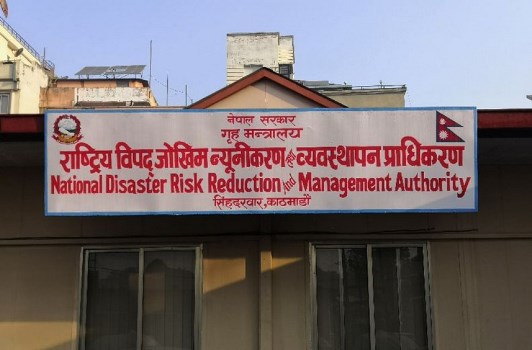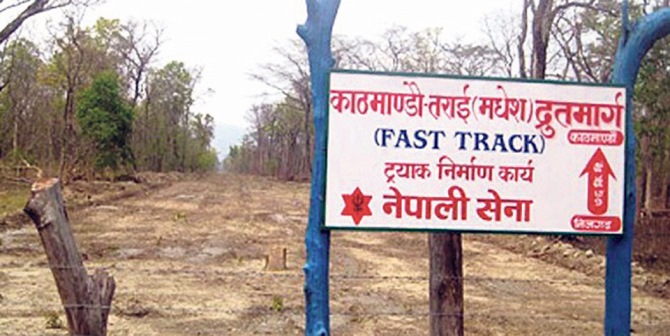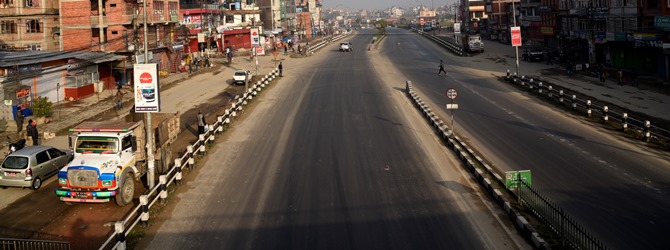Monsoon-induced death toll highest in a decade with 347 casualties

By Purushottam P. Khatri
Kathmandu, Oct. 22: Monsoon for this season has already receded from Nepal from October 16. But in comparison to the last 10 years’ record of natural disasters, the highest number of human casualties took place this year along with the highest number of reported incidents of natural disaster.
According to National Disaster Risk Reduction Management Authority (NDRRMA), monsoon season this year began on June 12 and within the span of monsoon, the highest number of incidents of landslides and floods - 911 in total took place, in which a total of 347 people died.
Of the total 911 incidents, 475 incidents of landslides and 436 incidents of floods took place, and the landslides took the lives of 293 people while the floods claimed 54 lives.
In these two separate types of incidents, 64 people were missing in the landslides and 36 in floods.
When looking at the monsoon-induced record of 2011, 414 incidents of floods and landslides had happened in which 221 people were killed.
Last year in 2019, a total of 160 people had lost their lives in a total of 677 incidents of landslides and floods, according to the NDRRMA.
“The pattern of monsoon this year looked different from the previous year,” according to Ngamindra Dahal, a climate change and environment management analyst.
Particularly in Sindhupalchowk, Myagdi, Tanahu, Kaski, Achham, Bajura, Darchula, Bajhang, Kalikot, Jajarkot, Rukum West, Syangja, Baglung, Sankhuwasabha, Gorkha, and Dhading saw the maximum number of disasters and loss of human lives this year.
Dahal suggested that the government should pay attention to increasing the amount to be used in risk reduction programmes as the government has been allocating low budget for it.
“There would be no meaning to lament after many casualties took place due to lack of proper risk reduction programmes and budget allocation,” he said.
Watershed expert Madhukar Upadhyaya said whatever changes have taken place in the pattern of monsoon, everything should be considered in light of climate change.
This year’s monsoon, which concentrated in a small area (phenomena of cloud burst), had caused many disasters, he said.
“Over the past few years, torrential rains have been concentrated in small areas in hilly and mountainous regions,” Upadhyaya said. And this has been resulting in unimagined losses of human lives and property, he said.
Chief Executive Officer (CEO) of NDRRMA Anil Pokhrel said the government should keep the issue of risk reduction in priority as the risk of floods and landslides is increasing every year.
“We have drawn the government’s attention to the need for identifying potential disaster risk areas,” he said.
According to senior meteorologist Barun Poudel, this year there has been more than the average rainfall in Dharan, Biratnagar, Dhankuta, Jiri, Kathmandu, Simara, Pokhara, Lumle, Dang, Dhangadi and less than average in Dadeldhura, Dipayal, Surkhet, Jumla and Nepalganj.
According to the record of Meteorological Forecasting Division, Lumle in Kaski received the highest amount of rainfall of 4,500 mm during this monsoon from June 1 to September. Within these months, Kathmandu received rainfall in between 1,000 to 1,200 mm, according to the record.
Recent News

Do not make expressions casting dout on election: EC
14 Apr, 2022
CM Bhatta says may New Year 2079 BS inspire positive thinking
14 Apr, 2022
Three new cases, 44 recoveries in 24 hours
14 Apr, 2022
689 climbers of 84 teams so far acquire permits for climbing various peaks this spring season
14 Apr, 2022
How the rising cost of living crisis is impacting Nepal
14 Apr, 2022
US military confirms an interstellar meteor collided with Earth
14 Apr, 2022
Valneva Covid vaccine approved for use in UK
14 Apr, 2022
Chair Prachanda highlights need of unity among Maoist, Communist forces
14 Apr, 2022
Ranbir Kapoor and Alia Bhatt: Bollywood toasts star couple on wedding
14 Apr, 2022
President Bhandari confers decorations (Photo Feature)
14 Apr, 2022





.jpg)




